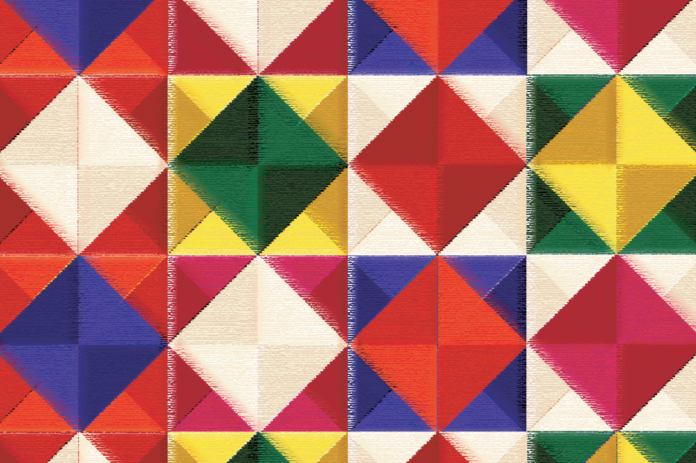Fashion is not just an outward display of culture, but a way to connect to it
Wedding season is generally a happy time for all, but it’s especially meaningful for Punjabis. It’s a chance to finally see family from various continents who we haven’t seen in years, party for a straight week and, of course, show off our newest fashion grabs from the last trip to Punjab.
I grew up in the Bay Area, which is a very culturally and ethnically diverse part of the country. Walking into Safeway with the brightest salwar-kameez suit, a traditional female garb, might have felt odd, but it usually wasn’t uncomfortable. Every Sunday, my dad took my brother and me to the gurdwara and on the way back, we always stopped by the city library. I was an abnormally tall and wiry 10-year-old in a Punjabi suit carrying a school bag full of books, but I wasn’t the only one. I was used to seeing grandmothers gathering at the park in the summer evenings wearing their everyday salwar-kameez suits, and girls like me going to grocery stores, libraries, restaurants and other places in our Punjabi clothes.
Because I grew up outside Punjab, fashion became one of the few things with which I could immediately connect to my heritage. Fashion’s impact is unique because of how tangible and physical it is.
Of course, growing up there were still stories from my parents and grandparents, movies to watch, music to listen to, as well as a very present and physical community, that helped me stay grounded to my roots. I learned to read and write Punjabi when I was in elementary school. My grandparents had strict Punjabi-only conversations when they called to ensure that we wouldn’t lose the language as we began learning English at school. But fashion was perhaps one of the most glaring and obvious visual symbols of my culture.
Being surrounded by Punjabi attire at gurdwaras or Punjabi gatherings reminded me that although I may not physically be in Punjab, its culture is still an important part of my identity. Fashion may seem trivial, but it can wordlessly showcase a beautiful and powerful segment of culture.
The most important part of Punjabi fashion for me, however, goes beyond the scope of style and new clothing. Unlike the jeans and sweaters that I buy at the mall, almost all of my Punjabi clothes were bought on trips to Punjab. I’ve only made two visits in my memory and in both visits, my mom and grandma blocked an entire week just to go shopping for new suits. These suits range from party wear to everyday casual clothing.
On our last trip, almost eight years ago, we spent an entire day walking through Jalandhar’s Rainak Bazar going from one fabric store to another. My mom and grandma led the way through the narrow and bustling alleyways of the bazar, a well-functioning scene of chaos. Jewelry and fabric stores occupied every square foot of the bazar, and the limited spaces between the shops were overtaken by small business vendors calling out to shoppers to buy their jewelry or garments.
I loved seeing my mom and grandma spend hours searching for the perfect clothing and designs in every fabric store and tailor’s boutique. But in retrospect, what I loved most was walking through the crowded bazar with my mom the way she must have done with my grandma years ago. Shopping in the clothing markets of Jalandhar wasn’t so much about finding new clothes to wear as it was about spending time with my mom and grandmother in boutiques bursting with the colors and patterns of Punjabi culture.
This is what makes Punjabi fashion all the more special to me. My chunnis, or scarves, weren’t picked off a shelf to match with my salwar-kameez — my mom and grandmother picked out the fabric and chose the colors and patterns that would be dyed onto the chunni. And whereas I saw most of the unstitched fabric for the suits as just a roll of pretty designs, my mom and grandmother somehow crafted in their minds a beautiful suit to be tailored with a perfect and unique style. Every detail on my suit was chosen and made with care and consideration, instead of being picked off a department store shelf.
Fashion is one of the many unique ways I have been able to connect with my heritage — this is the same for many others, whether of the Punjabi diaspora or not. What I love most is the community of support, especially the sisterhood that I have seen on social media among other young Punjabis who may have never met, but proudly flaunt and incorporate elements of Punjabi fashion into their identity.
Punjabi fashion stands out in Western communities, but that’s precisely the point: Its bright colors are made to be seen, and its unique patterns are meant to draw attention. It’s a reminder of the powerful impact that fashion and art can have in finding our community.
Written by: Simran Kalkat — skkalkat@ucdavis.edu
Disclaimer: The views and opinions expressed by individual columnists belong to the columnists alone and do not necessarily indicate the views and opinions held by The California Aggie





